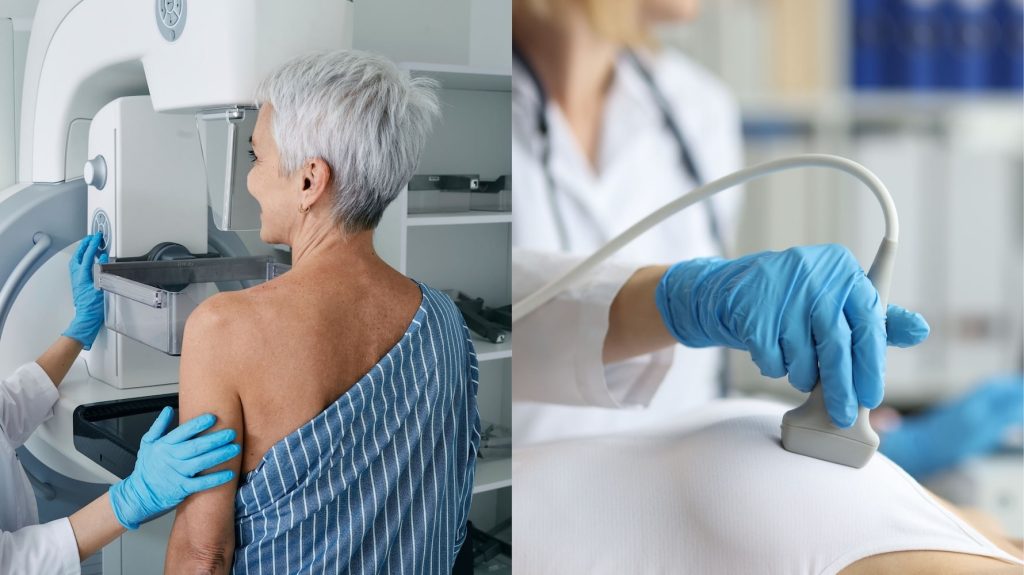Receiving a breast cancer diagnosis can be overwhelming, especially when you’re suddenly faced with decisions that impact both your health and sense of self. Among the most important are your breast cancer surgery options—decisions that often need to be made quickly, yet thoughtfully.
For many women, the choice often comes down to two common types of breast surgery: mastectomy vs lumpectomy. Both procedures are effective, but they differ in terms of how much breast tissue is removed, the recovery process and how they may affect future treatments or reconstruction plans.
This article provides a balanced overview of these two options, guiding you through the factors to consider, how each procedure is performed and what to expect during recovery. With the right information and support from your medical team, you can make a confident and informed decision about your treatment.
What Is a Mastectomy
A mastectomy involves the surgical removal of all breast tissue to treat or prevent cancer. It is a commonly selected option within comprehensive breast cancer treatment in Singapore programmes.
Types of mastectomy include:
- Total (simple) mastectomy – complete removal of breast tissue, often including the nipple
- Skin-sparing mastectomy – preserves most of the breast skin for reconstruction while removing glandular tissue
- Nipple-sparing mastectomy – preserves both skin and nipple, when oncologically safe, to enhance post-surgical appearance
Recommended in situations such as:
- Larger tumours that cannot be removed by lumpectomy
- Multifocal cancers affect multiple areas of the breast
- Genetic predispositions (e.g., BRCA mutations), where reducing risk is a priority
- Cases where lumpectomy plus radiation is unsuitable due to the size or location of the tumour
Mastectomy is often part of a breast tumour removal, which may also include reconstruction, chemotherapy, hormone therapy or radiation. For some patients, the more definitive nature of removing the entire breast offers peace of mind. In addition, improvements in reconstruction techniques have helped enhance aesthetic outcomes for those who choose this treatment.
What Is a Lumpectomy
A lumpectomy also known as breast-conserving surgery removes only the tumour and a small margin of normal tissue, preserving most of the breast. It is offered widely in Singapore to eligible patients who favour breast conservation.
Ideal for:
- Early-stage breast cancers that are confined to a single area
- Tumours that are small relative to breast size, allowing good cosmetic results after removal
Radiation therapy is almost always recommended after a lumpectomy to reduce recurrence risk, typically 5–6 weeks after surgery.
Patients choosing this route prefer preserving most of their natural breast shape and are comfortable with attending regular radiation appointments. Outcomes for early-stage breast cancer are similar to mastectomy, provided radiation is completed.
In Singapore, lumpectomy is supported by standard cancer care pathways. For many women, it offers a blend of effective treatment and cosmetic preservation.
| Mastectomy | Lumpectomy | |
|---|---|---|
| Extent of Removal | Entire breast tissue | Tumour + margin |
| Appearance | Requires reconstruction or prosthesis | Preserves most breast shape |
| Radiation Needed | Not usually required | Required after surgery |
| Recovery Time | Longer (hospital stay and healing) | Generally short and less intensive |
| Recurrence Risk | Slightly lower overall | Slightly higher, but reduced with radiation |
| Survival Rates | Comparable for early-stage cancers | Comparable when radiation is completed |
When medically appropriate, both options offer similar survival outcomes. The choice between them depends on your diagnosis, breast cancer treatment plan and personal preferences.
Factors That Influence the Choice of Surgery
Selecting between mastectomy and lumpectomy depends on several factors:
- Tumour size and location – Larger or centrally located tumours may favour mastectomy
- Stage of cancer – Early-stage, small tumours often qualify for breast-conserving surgery
- Patient preference – Personal comfort with breast removal, appearance and follow-up treatment
- Genetic and family history – BRCA mutations or a strong family history may influence the choice toward mastectomy
- Radiation suitability – Patients unable to undergo radiation (e.g., due to other health conditions) may opt for mastectomy
- Cosmetic expectations – Women desiring a natural breast appearance and avoiding reconstruction may choose lumpectomy
- Reconstruction availability – Access to reconstructive surgery can make mastectomy a more appealing option
Breast cancer surgery in Singapore is not one-size-fits-all—surgeons take into account various medical and personal factors to guide patients toward the right surgical choice.
Dr Andrew Lee is a breast surgeon experienced in both lumpectomy and mastectomy procedures, as well as oncoplastic techniques. He works closely with each patient to ensure their treatment plan supports both cancer control and overall well-being.
The Cost of Breast Cancer Surgery in Singapore
The cost of breast cancer surgery in Singapore varies widely and depends on multiple factors, including the complexity of the procedure, the type of hospital (public or private), whether reconstruction is performed, and the patient’s treatment plan.
Here’s a general cost range, though actual charges will differ case by case:
- Lumpectomy in public hospitals: Approximately S$2,000–S$4,000 (after subsidies, for eligible Singapore citizens)
- Mastectomy with reconstruction in public hospitals: Around S$5,000–S$10,000, depending on the type of reconstruction and hospital classification
- Private hospitals: Mastectomy with reconstruction can range from S$10,000 to S$25,000 or more, based on surgical approach, implant or flap techniques, length of stay and other care requirements
Medisave, MediShield Life, and Integrated Shield Plans may cover a substantial portion of these costs. However, entitlements and out-of-pocket expenses are unique to each patient. It’s recommended to consult a hospital financial counsellor who can provide personalised advice based on your treatment plan, subsidy eligibility and insurance coverage.
Life After Breast Cancer Surgery
Post-surgery recovery involves both physical healing and emotional adjustment. These are the important parts of the recovery process:
- Physical Recovery
- Wound care: Monitor the surgical site, keep drains clean (if present) and manage stitches or dressings as advised by our care team.
- Activity restrictions: Avoid heavy lifting and strenuous activities for several weeks. Return to daily routines and exercise gradually, based on our doctor’s advice.
- Support garments: Wearing a post-surgical bra can reduce swelling, provide gentle compression, and improve comfort during healing.
- Emotional Well-being – Breast surgery can affect how a woman feels about her body and identity. Feelings of anxiety, grief or uncertainty are not uncommon. Seeking breast cancer support for women, such as counselling services or peer support groups, can ease this transition. Organisations like the Singapore Cancer Society offer emotional and practical support tailored to survivors, helping women regain confidence and adjust to life after treatment.
- Ongoing Monitoring – Recovery doesn’t end at surgery. Stay in close contact with your healthcare team and attend all follow-up appointments. Regular exams and imaging tests help detect recurrence early and support long-term health.
Frequently Asked Questions
Neither is objectively better—it depends on cancer characteristics, patient goals and willingness to undergo radiation.
Lumpectomy carries a slightly higher risk of local recurrence, but radiation reduces this significantly.
Yes. Most surgeries qualify for Medisave and other plans. Private hospitalisations may incur additional out-of-pocket costs.
Yes. Breast reconstruction in Singapore can be performed either immediately after mastectomy or at a later time. Options include implants or using your own tissue (flap surgery).
Most women can resume light activities within 4–6 weeks. Heavy lifting or intense exercise may require a longer recovery period.
Finding Clarity in Your Breast Surgery Decision
Choosing between mastectomy vs lumpectomy is not just a medical decision—it’s a personal one that affects your body, emotions and future. While both offer similar survival outcomes for early-stage breast cancer, the right choice depends on your diagnosis, lifestyle and what feels right for you.
Dr Andrew Lee is here to help you make that decision with confidence. He offers clear guidance on your surgical options and will work closely with you to ensure your treatment aligns with your medical needs and personal values.
You don’t have to navigate this alone. With the right support, you can move forward with clarity and strength.







